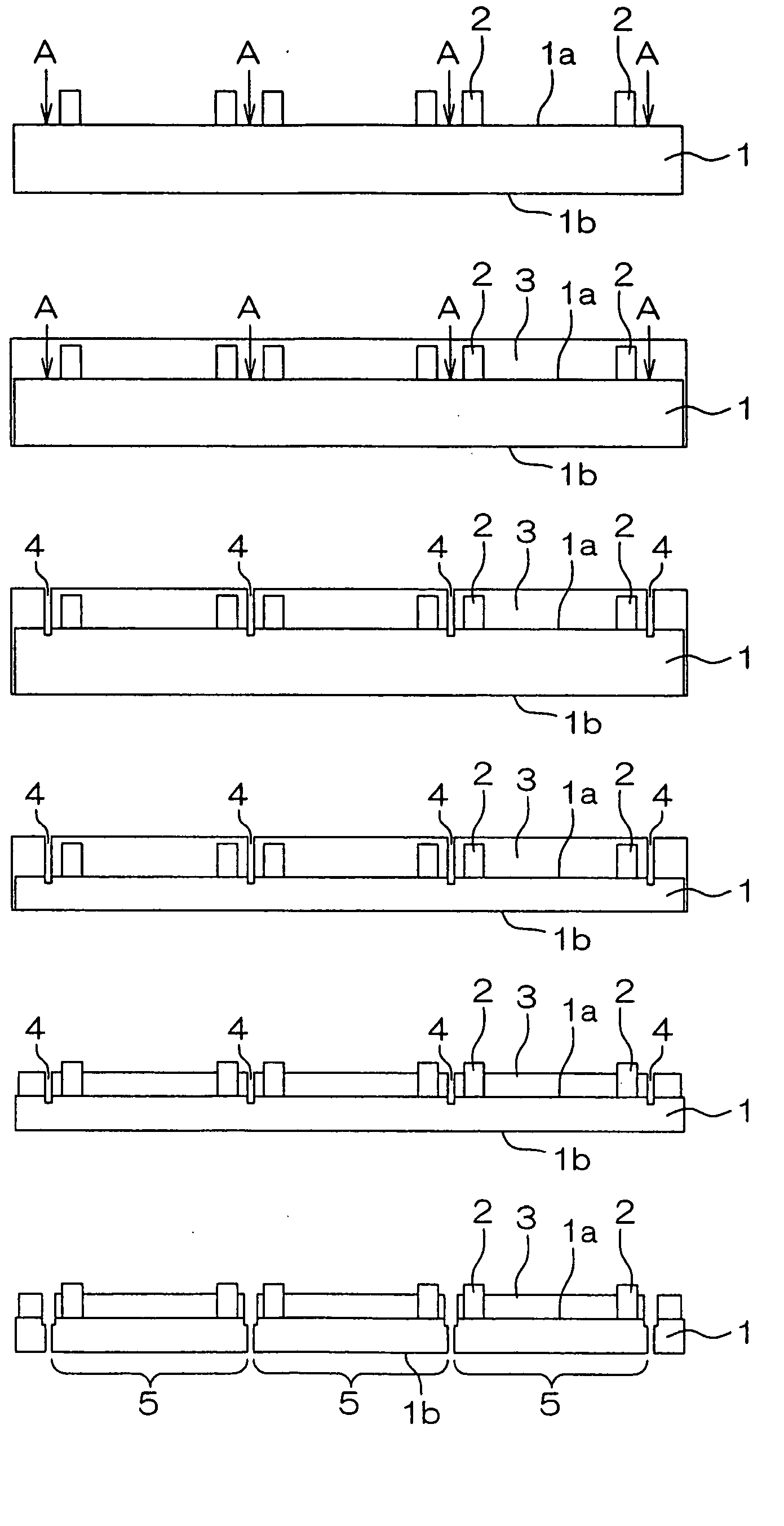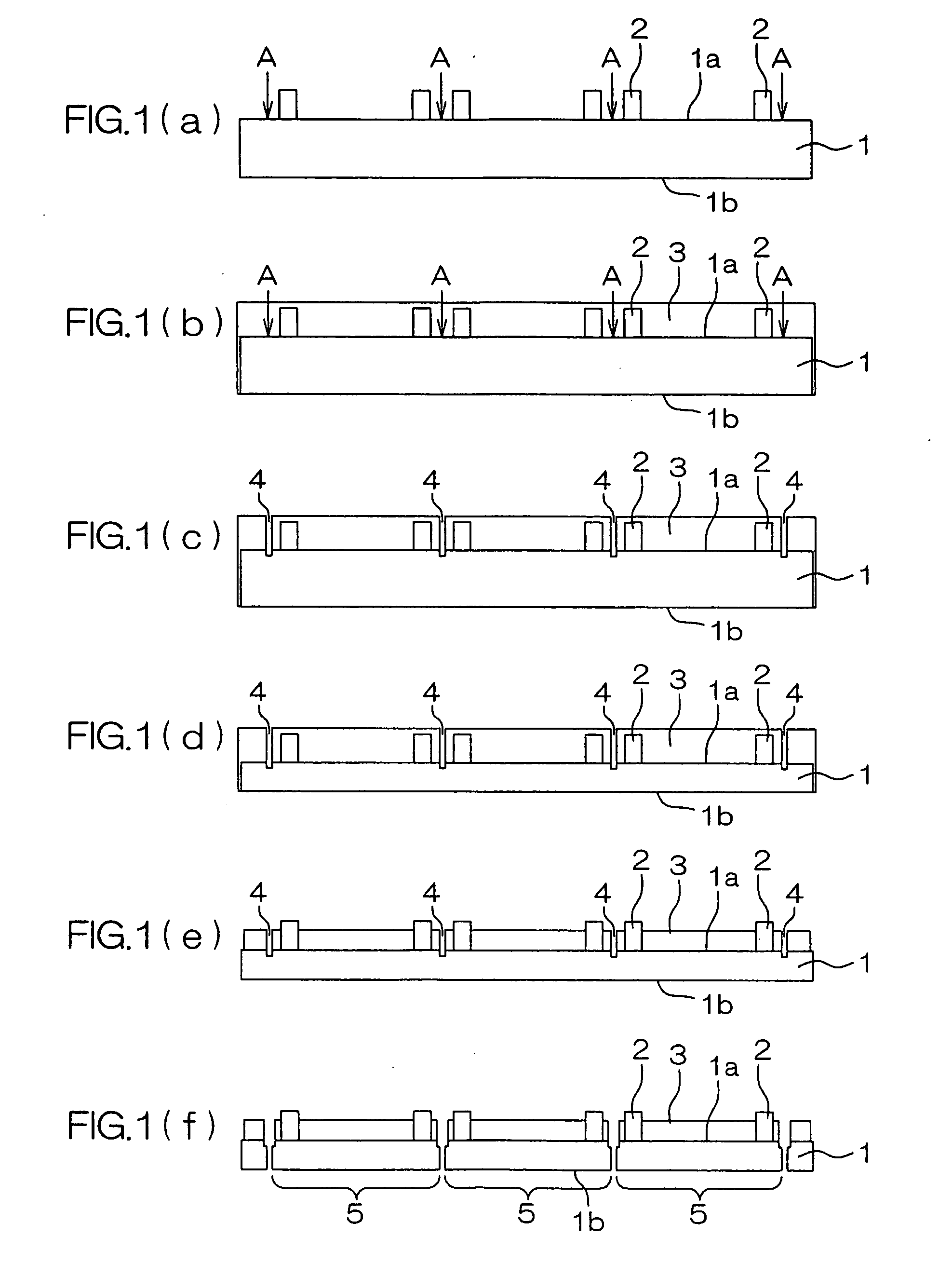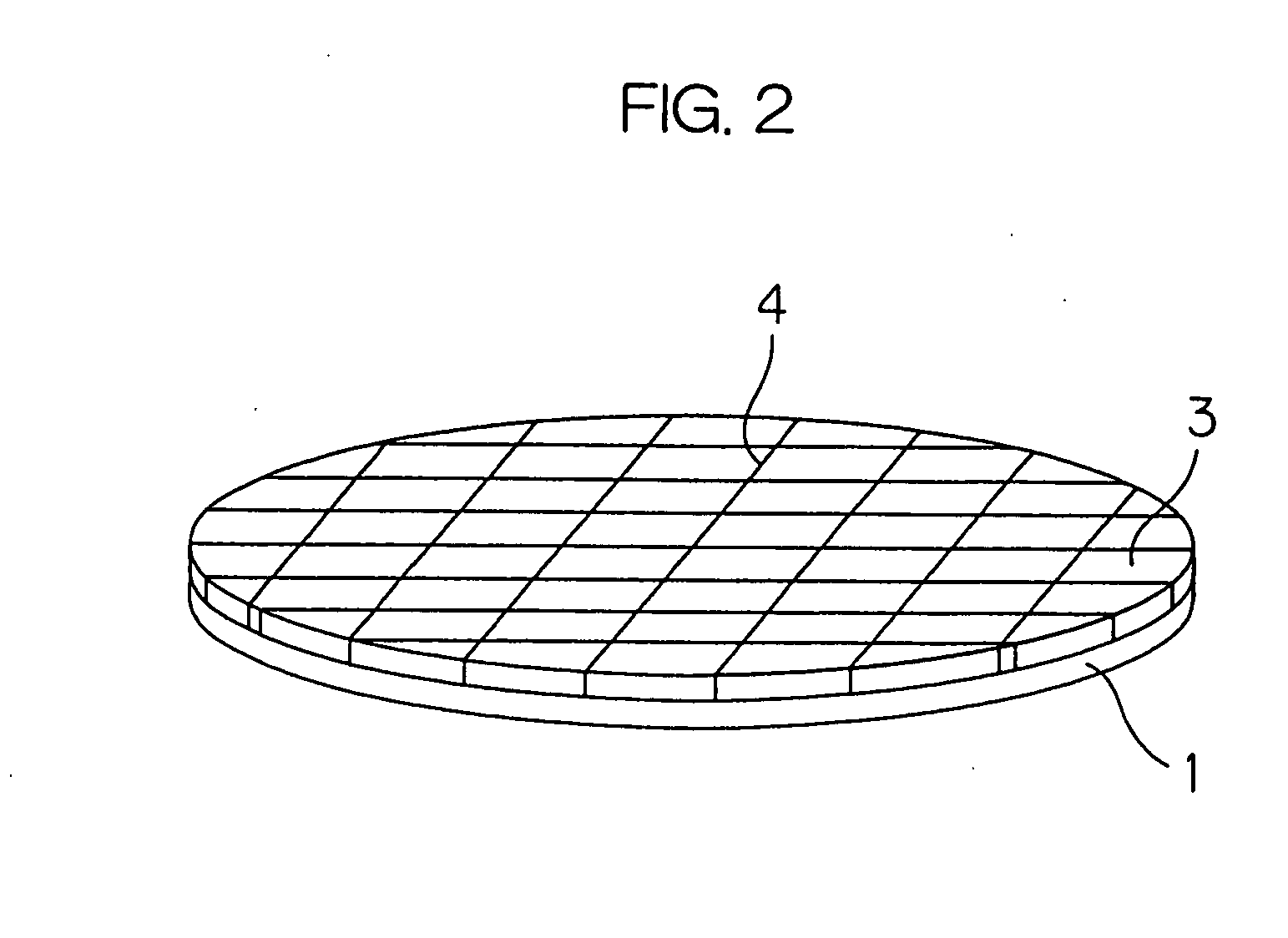Semiconductor device and method for manufacturing the same
a semiconductor and semiconductor technology, applied in semiconductor devices, semiconductor/solid-state device details, electrical devices, etc., can solve the problems of warping in the wafer, the inability to obtain semiconductor chips in an even thickness, and the fear of readily breaking a wafer having a thickness reduction by back-surface grinding, etc., to achieve the effect of reducing the thickness of the wafer
- Summary
- Abstract
- Description
- Claims
- Application Information
AI Technical Summary
Benefits of technology
Problems solved by technology
Method used
Image
Examples
Embodiment Construction
[0026] Explanation will be made in detail below on an embodiment of the present invention with reference to the accompanying drawings.
[0027]FIG. 1 is an illustrative sectional view showing, in a process sequence, a method of manufacturing a semiconductor device according to an embodiment of the invention. The semiconductor wafer 1 of FIG. 1 (hereinafter, referred merely to as a “wafer 1”), processed through various device-forming and wiring processes, has a surface 1a, as an activation surface, covered with a protection film (passivation film) of a silicon nitride film or the like. The pads for external electric connection are exposed from the protection film.
[0028] As shown in FIG. 1A, a plurality of projection electrodes 2, e.g. of gold (Au), are respectively formed on the pads. The projection electrodes 2 are preferably formed, for example, by electroplating to a height, e.g. of 50 μm, with respect to the surface of protection film. The projection electrode 2 is preferably in t...
PUM
 Login to View More
Login to View More Abstract
Description
Claims
Application Information
 Login to View More
Login to View More - R&D
- Intellectual Property
- Life Sciences
- Materials
- Tech Scout
- Unparalleled Data Quality
- Higher Quality Content
- 60% Fewer Hallucinations
Browse by: Latest US Patents, China's latest patents, Technical Efficacy Thesaurus, Application Domain, Technology Topic, Popular Technical Reports.
© 2025 PatSnap. All rights reserved.Legal|Privacy policy|Modern Slavery Act Transparency Statement|Sitemap|About US| Contact US: help@patsnap.com



